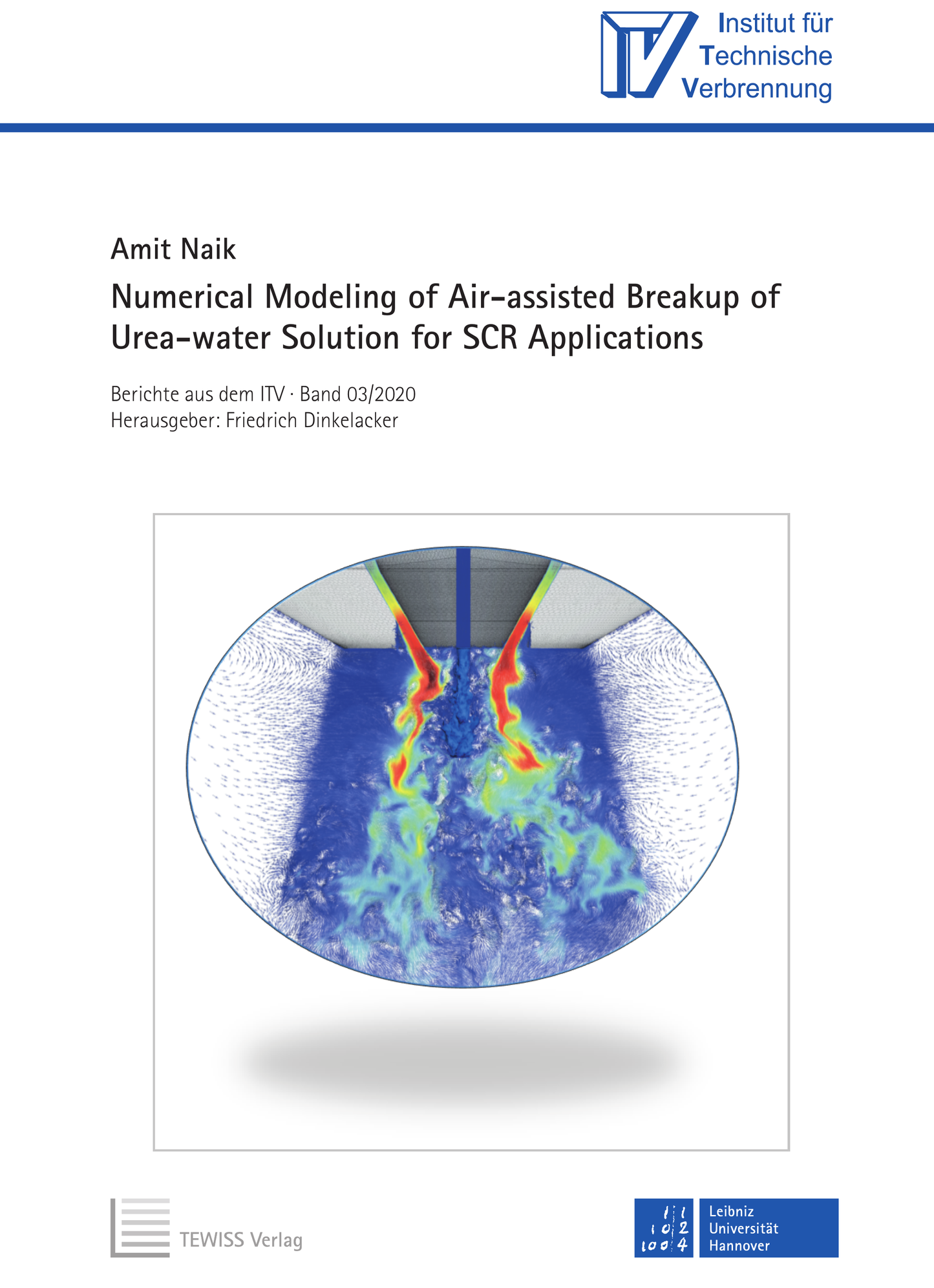Numerical Modeling of Air-assisted Breakup of Urea-water Solution for SCR Applications
Autor: Amit Naik
ISBN: 978-3-95900-473-2
Dissertation, Leibniz Universität Hannover, 2020
Herausgeber der Reihe: Friedrich Dinkelacker
Band-Nr.: 03/2020
Umfang: 150 Seiten, 78 Abbildungen
Schlagworte: Exhaust gas after-treatment system, Selective catalytic reduction (SCR), Multi-phase flow simulation, Air-assisted breakup, Volume-of-Fluid, Lagrangia
Kurzfassung: To simulate the air-assisted breakup of the urea-water-solution for the after treatment of NOx of large scale ship engines, two time-dependent numerical approaches using 3D CFD methods have been developed. The first approach is based on the Volume-of-Fluid (VOF) method combined with a high-resolution interface capturing scheme. The approach was able to investigate the detailed spray breakup phenomenon, as being compared with detailed atomization experiments carried out at a hot gas test-rig at Leibniz University Hannover. The simulation facilitates a detailed investigation of spray characteristics, such as the liquid jet penetration, spray angle, droplet spectrum, and the possibility of deposit formation on the injector. Another approach based on the Lagrangian particle tracking model allows the complete SCR simulations for large bore ship engines. The method can predict the diameter and velocity distribution of droplets produced from the atomization of the urea-water-solution jet. The approach was also able to predict the risk of urea-film formation in SCR systems, as has been compared with measurements from MAN Energy Solutions SE, Augsburg.


